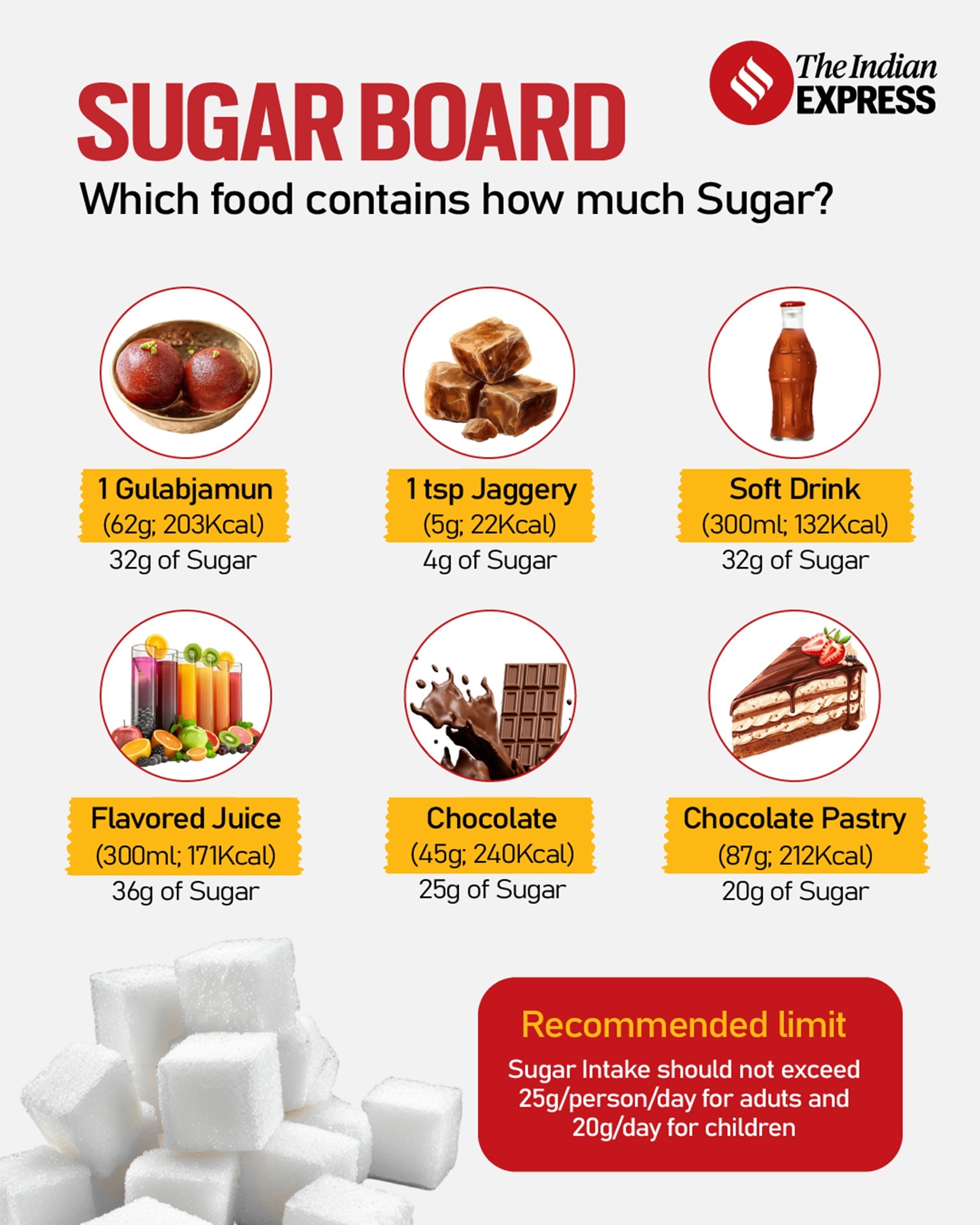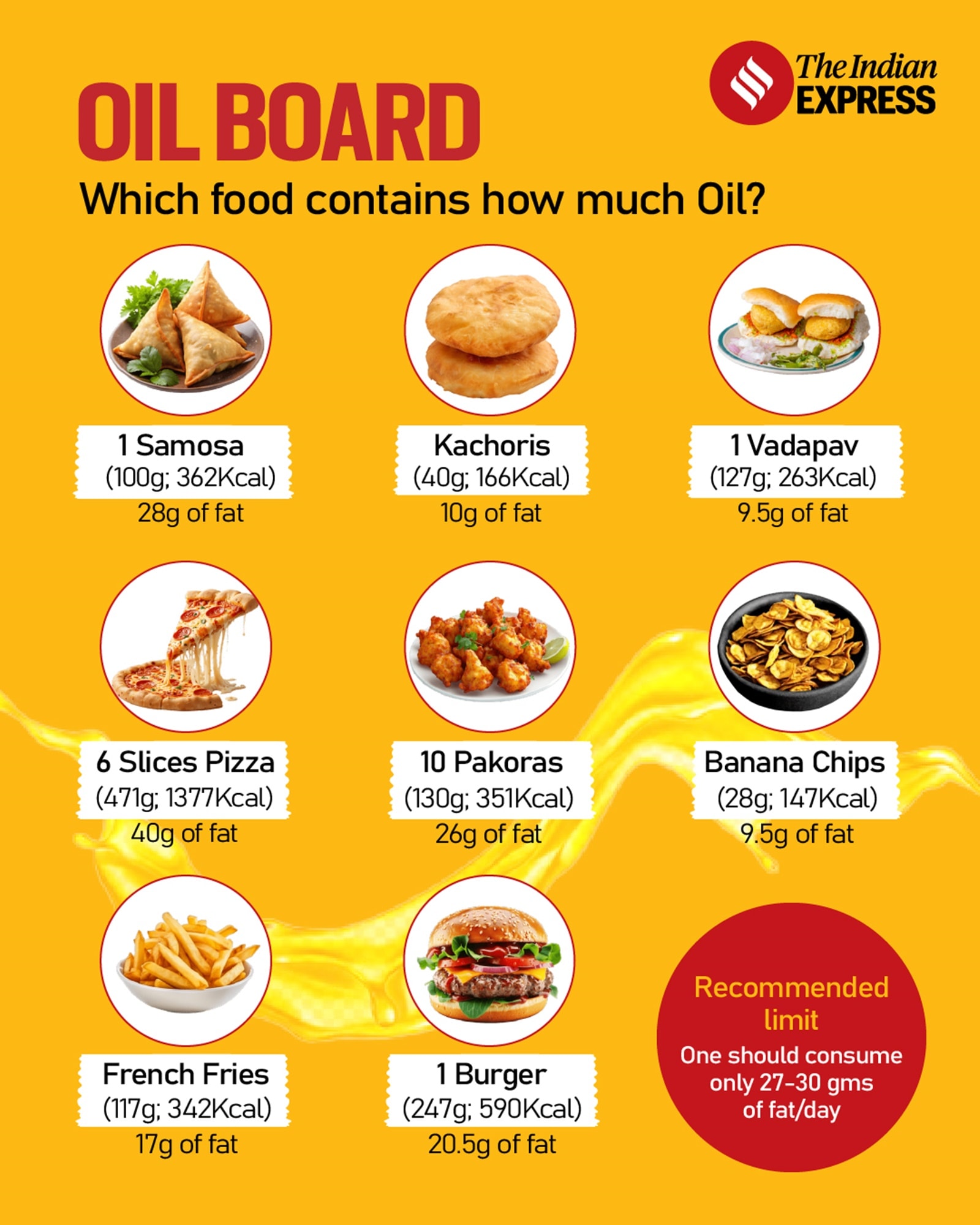Can one samosa or vada pav a day really impact your health? Experts break down the truth behind your favourite fried snacks
The health ministry alert on display boards is about generating awareness, not food anxiety
 According to the civic body's data, there are 592 bakeries in Mumbai, out of which 209 are already operating in cleaner fuel, while 297 bakeries are yet to switch to cleaner fuel as they still operate on the conventional ovens known as bhattis or wooden chulhas. (Representational Image/File)
According to the civic body's data, there are 592 bakeries in Mumbai, out of which 209 are already operating in cleaner fuel, while 297 bakeries are yet to switch to cleaner fuel as they still operate on the conventional ovens known as bhattis or wooden chulhas. (Representational Image/File)Ever since the health ministry has asked schools, offices and public institutions to display a nutrition board at their canteens, listing the fat and sugar component of desi snacks like samosa, jalebi and vada pav, many are questioning if the freshly prepared snacks can be harmful. But the real issue is about more than just calories.
“When we talk about controlling obesity and blood sugar, we just count the calories of fried snacks. But we conveniently ignore the quality or the source of calories,” says Ritika Samaddar, Regional Director, Dietetics, Max Healthcare. For example, a calorie each from a fruit and a sugary drink may have the same energy value but the fruit provides fibre and micronutrients while the sugary drink is refined carbohydrate which spikes blood sugar. “Similarly, calories from food fried in olive oil and refined oil may have the same value but the former has beneficial Omega 3 and Omega 6 fatty acids but the latter contains Omega 6 in excess, which can be inflammatory, has low levels of vitamins and antioxidants and can quickly turn to trans fats on reheating,” she adds. That’s why this directive, she feels, is about generating awareness about oils and cooking techniques rather than questioning the caloric value of the fried food itself.
What are the calorie values of samosas, kachoris and vada pav?
According to the Food Safety and Standards Authority of India (FSSAI), one samosa (100 g) yields 362 kilocalories (kcal) with 28 g of fat, kachoris (40 g) produce 166 kcal and 10 g of fat, one vada pav (127 g) yields 263 kcal and 9.5 g of fat, 10 pakoras (130 g) are equivalent to 351 kcal and 26 g of fat, banana chips (28 g) yield 147 kcal and 9.5 g of fat while one gulab jamun (62 g) releases 203 kcal and 32 g of sugar. A pair of jalebis can set you back by 300 calories, nearly all from sugar and reheated oil.
 Sugar board
Sugar board
“While the average adult requires around 2,000 calories a day, just one samosa can consume nearly 20 per cent of that allowance. Pair it with a cup of sweetened chai or a soft drink, and you’re easily pushing beyond 500 calories in one sitting with minimal nutritional benefit,” explains Dr Subrat Akhoury, chairman, cath lab and interventional cardiologist, Asian Institute of Medical Sciences, Faridabad.
Why oil is the real problem
The real danger isn’t just in the calorie count. “Most of these snacks are fried in the same batch of oil again and again. Reheated oil produces toxic compounds like acrylamides, which not only damage the heart and impact digestion but are also linked to cancer,” says Dr Akhoury.
When cooking oil is repeatedly heated, especially at high temperatures, the chemical structure of its fatty acids changes. “The cooking oil becomes trans fat, which is known to raise LDL (low density lipoprotein or bad cholesterol) and lower HDL (high density lipoprotein or good cholesterol) increasing the risk of heart disease,” says Samaddar.
Cooking in the same oil can form Advanced Glycation End Products (AGES), harmful molecules resulting from a chemical reaction of sugars binding to protein or fat. “AGES are linked to chronic illnesses like diabetes, heart and kidney disease as well as Alzheimer’s,” says Samaddar.
 Oil board
Oil board
What if fit people say they have accounted for samosa in their daily recommended calorie allowance?
Dr Subrat responds, “Not all calories are created equal, so 300 calories from almonds can support your metabolism and provide essential nutrients. But 300 calories from deep-fried snacks are loaded with trans fats and refined carbohydrates that trigger inflammation and insulin resistance. These snacks offer almost no fibre, vitamins or satiety. In fact, they often lead to overeating later in the day.”
How does one enjoy these snacks then?
Cook them in fresh oil, preferably at home, use healthier substitutes rather than refined carbs and make them part of an otherwise balanced diet. “What we need is awareness, not anxiety,” says Dr Subrat.



- 01
- 02
- 03
- 04
- 05




























